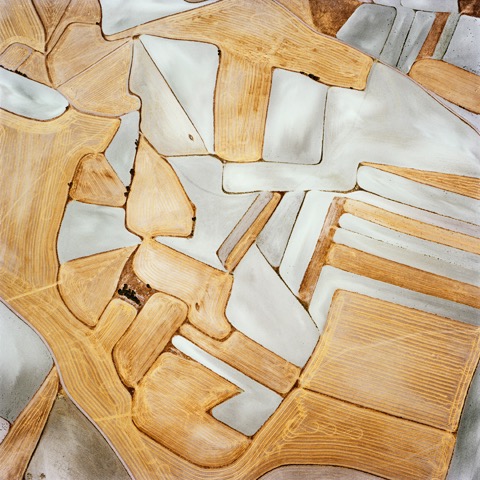 |
Starting with the placement of cameras in hot-air balloons, photography, almost at its inception, revolutionized the way landscapes were seen. It collapsed vast chunks of topography into two-dimensional pictures that provided bird’s eye views of the world. Airplanes, at the beginning of the 20th century, helped photographers expand and refine those views, as did the flight-inspired art of the futurists. Using the violent upheaval of perspective known as aeropittura, they created horizon-less abstract compositions glorifying all things technological. Satellite imagery via Google Maps goes further, bringing us big pictures out of which we can extract, slice and dice the underlying data. None of which, apparently, has rendered camera-based aerial photography obsolete.
 |
 |
.jpg) |
developments returning to sand in Vicálvaro, a province of Madrid, upending the technology’s usual narrative of a steady march forward to reflect the reality of the Great Recession, which sent industries all over the globe reeling. The crumbling of the Vicalvaro foundations is evidence of the earth quietly reasserting itself; it’s echoed by the spread of olive trees in The Fall (Fuensalida 5). Though planted in jarringly precise rows, the trees grow wildly, creating a highly varied pattern, suggesting that despite overwhelming force, we can’t always get nature to do what we want. So beaten down are these landscapes that nature’s forces have about as much chance of prevailing as a sapling trying to emerge from a crack in a highway.